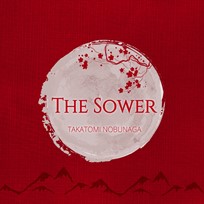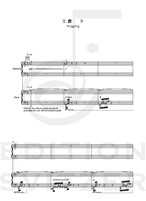
The Sower
Composer: Takatomi Nobunaga
Instrument: Marimba and Piano
Level: Advanced
Published: 2016
Price: €26.00
Item details
-
Description +
-
Duration: approx. 17 min.
This piece was commissioned by Marimbist Fumito Nunoya and premiered in July 2011. Inspiration for the piece grew as a response to the Great East Japan Earthquake and Tsunami of March 2011 as Mr. Nobunaga and Mr. Nunoya were both deeply impacted by the struggles of our countryman in the wake of the tragedies.
Damage from the disaster spread far beyond the immediate effects of the earthquake and tsunami. Ripple effects on Japan’s infrastructure had a great impact not only on the citizens of Japan, but also on others around the region and world as Japan’s nuclear plants began to meltdown.
While the act of composing music may be powerless itself against a tragic situation like this, it may provide a way to envision light emerging from the darkness. While researching nuclear power, Mr. Nobunaga discovered a project called “Narodychi Restoration and Nanohana (Rape Blossom) Project” by “The Association to help Chernobyl (Japanese NPO).” (Chernobyl suffered a nuclear power plant accident in 1986.) The focus of the project was on the ability to cultivate rapeseed in contaminated areas to produce biodiesel and biomass. This activity of developing something of benefit and beauty out of a tragedy offered inspiration for writing new music.
Particularly, the phrase “sow the seeds,” came to mind as a key inspirational concept for the piece, recalling both the painting “The Sower” by Jean-Francois Millet and a verse from Psalms 126 that reads “Those who sow with tears will reap with songs of joy”.
The first two movements, “I. The Sower” and “II. Tears,” are inspired directly from the words of the Psalms 126. “Wriggling,” the third movement, gives an unearthly impression, but is inspired by its Chinese character. The character includes in it the sign for spring, which is the season of hope for renewal. Thus, the title of the third movement suggests a time when life can begin to wriggle anew.
The progression of the movements is motivated by the aggregation of small grains. The sound imagery of the marimba equates to the cultivation process of “Seeds--Tears--Cell Division.” The piece ends triumphantly on the belief that “Music is strong” and a thing of beauty can arise from the ashes.
-
-
Instrumentation +
-
Marimba and Piano
-
-
About the composer +
-
Born in 1971, Takatomi Nobunaga graduated from the Department of Education in the Faculty of Literature at Sophia University in 1994, and he taught himself composition. He has won the first prize at Sogakudo Concert Hall Japanese Lied Composition Competition in 1998, the new face award from Japan Society for Contemporary Music in 2000, and the second prize at Japan Music Competition (Chamber Music Division) in 2001. His choral music is currently frequently performed in Japan and “Prelude,” solo piano work, was a requirement piece for 2006 PTNA piano competition in Japan.
-
-
Reviews +
-
Review (Percussive Notes, June 2020)
“The Sower” is a three-movement composition for marimba and piano. The piece is inspired by the devastating effects of the 2011 earthquake and tsunami in Japan, as well as the impacts of these events on the country’s infrastructure and nuclear plants. The concept for each of the movements comes from a verse in Psalm 126, which reads, “Those who sow with tears will reap with songs of joy.” According to the composer, “The progression of the movements is motivated by the aggregation of small grains,” with the marimba representing the seeds’ cultivation process. Approximately 17 minutes in length, this work is appropriate for graduate-level and professional musicians.
The first movement begins and ends with an exploration of thirty-second-note triplets and quintuplets by both performers, many of which occur in unison. As the movement progresses, the piano begins to take on a supportive role to the marimba’s single-line passages. “Tears,” the middle movement, features each instrument for extended periods of time and requires more demanding four-mallet technique from the percussionist. This is demonstrated by the expansive use of the range and rapidly changing chord progressions, as well as sudden dynamic contrast. The final movement, “Wriggling,” is the longest and most taxing for both players. It opens with a single A-flat in the piano, sustained for the duration of the opening section by the sostenuto pedal. This note forms the basis for all melodic and rhythmic material for the remainder of the piece, pushing the players’ individual skills and abilities as chamber musicians.
A truly remarkable addition to the repertoire, “The Sower” is a programmatic work that should be enjoyed by both performers and audience members, and it would be a worthwhile centerpiece on a chamber recital.
—Danielle Moreau
-
-
Credits +
-
Front Cover graphics and layout: Gaia Gomes
Engraving: Takatomi Nobunaga
Printed in Copenhagen, Denmark
Copyright © Edition SVITZER
www.editionsvitzer.com
-


